
Friday, April 29, 2011
Bricks in Space
Today's launch was postponed, but part of the payload on this mission is a set of LEGO blocks. This is part of the Bricks in Space program, that has put together a number of lesson plans using LEGO on the International Space Station to get kids interested in science. It looks like astronauts on the ISS will be building simple machines out of LEGO to demonstrate principles of physics in zero gravity, and then kids in class can build the same machines and compare the results in normal gravity. I believe this mosaic was part of a LEGO display at Cape Canaveral for people who came to watch the launch. It looks like both President Obama and the recovering Representative Giffords (whose husband is a Shuttle astronaut) were on hand, despite the cancellation of the launch. Well, maybe they at least got to check out the LEGO display. :)


Thursday, April 28, 2011
Möbius strip
In the mid-nineteenth century mathematicians August Ferdinand Möbius and Johann Benedict Listing found that if you take a strip of paper, give it a half twist, and attach the ends, you create an interesting object. If you follow your finger along the surface you will find that it has only one continuous surface (that is, as you follow along you will end up covering both sides of the strip. If you try to cut it in half, you only end up with a longer strip with two full twists. The mathematics describing this, and similar objects, gets quite complex. Möbius strips have found applications beyond being mathematical oddities. For instance, conveyer belts are often built as Möbius strips so that they have even wear and tear. In chemistry, Möbius aromaticity involves a ring of atoms that incorporates a half twist. Crazyjoe579 made this LEGO version.


Tuesday, April 26, 2011
Physics by Design
Barbara Bratzel has been using innovative methods to teach kids science, and LEGO is one of her favorite classroom tools. Her eighth grade class is called Physics by Design, and she's gathered the lessons she's designed into a book (now in its third edition) so that other teachers can benefit from the same techniques. She has her students designing robots and simple machines to teach them principles of mechanics and construction. She says that LEGO is a great tool to get kids interested in science, even those who might not normally gravitate to it.


Tuesday, April 19, 2011
Bioturbation
That's the process of soil (or other substances) being mixed up by the activity of animals. Worms are among the most important actors in this process, which is vital to the health of the ecosystem. Darwin actually studied this process, and his last book was The Formation of Vegetable Mould through the Action of Worms, with Observations on their Habits. On his front lawn he had a stone that he carefully observed daily, noting how the action of worms underground led to settling of the soil. Kaptain Kobold recreated the worm stone in celebration of Darwin Day earlier this year.
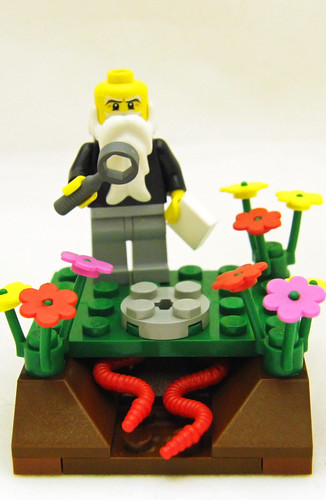

Thursday, April 14, 2011
Poly(1-cyanoethylene/1-phenylethylene/but-2-ene-1,4-diyl)
Serious LEGO fans know that ABS is the plastic that makes up those little bricks. Some of those go further and know that this is a polymer made up of acrylonitrile, butadiene and styrene. But what is that? Let's take a step back and learn a little bit about polymers. A polymer is like a chain. Each link of a chain is identical, and the difference between two chains of the same material is simply the number of links. The process of connecting one link to the next is the same whether you're talking about the third link, the thirtieth, or the three thousandth.

In a polymer, the individual links are small molecules that get connected together to make one big long molecule. For instance, PVC, or polyvinylchloride, starts out with separate molecules of chloroethane made up of two carbon atoms, three hydrogen atoms, and one chlorine atom. In the image below I show just five molecules coming together to make a short chain (color coded to make them easier to see), but in a polymer you will have hundreds or thousands of links connected to each other.

ABS is a more complex polymer made of three pieces. The A is acrylonitrile (blue in the picture below), B is butadiene (magenta) and S is styrene (red). This is called a copolymer. You could put these together in any number of different ways. For instance, the chain could be ABSABSABSABSABSABS, or AAABBBSSSAAABBBSSS, or AAAAABSAAAAABSAAAAABS. The different patterns, and relative amounts of the three pieces, will lead to polymers with different properties. I wasn't able in a quick search to find the exact mix in the plastic that LEGO uses, so I showed one industrial instance that divides the chains up into two blocks - sections of repeating ASASAS and other sections of repeating BBBBB. This plastic is produced in small pellets (often with color agents and other inclusions, though my photo just shows some raw uncolored pellets) which are then used for the injection molding process.


In a polymer, the individual links are small molecules that get connected together to make one big long molecule. For instance, PVC, or polyvinylchloride, starts out with separate molecules of chloroethane made up of two carbon atoms, three hydrogen atoms, and one chlorine atom. In the image below I show just five molecules coming together to make a short chain (color coded to make them easier to see), but in a polymer you will have hundreds or thousands of links connected to each other.

ABS is a more complex polymer made of three pieces. The A is acrylonitrile (blue in the picture below), B is butadiene (magenta) and S is styrene (red). This is called a copolymer. You could put these together in any number of different ways. For instance, the chain could be ABSABSABSABSABSABS, or AAABBBSSSAAABBBSSS, or AAAAABSAAAAABSAAAAABS. The different patterns, and relative amounts of the three pieces, will lead to polymers with different properties. I wasn't able in a quick search to find the exact mix in the plastic that LEGO uses, so I showed one industrial instance that divides the chains up into two blocks - sections of repeating ASASAS and other sections of repeating BBBBB. This plastic is produced in small pellets (often with color agents and other inclusions, though my photo just shows some raw uncolored pellets) which are then used for the injection molding process.

Tuesday, April 12, 2011
Vostok 1
Today is the 50th anniversary of our first step off this planet of ours. On April 12, 1961, Yuri Gargarin climbed in the Vostok 3K-A capsule atop a modified R7 rocket and launched into space. After a single orbit of the earth, lasting just under two hours, Gargarin returned safely to earth. Incidentally the R7 rocket was originally designed as an ICBM, but found much more use in the Russian space program. Variants of this rocket design are still used today to launch cosmonauts into space. Reto Geiger built a LEGO version of Vostok 1.
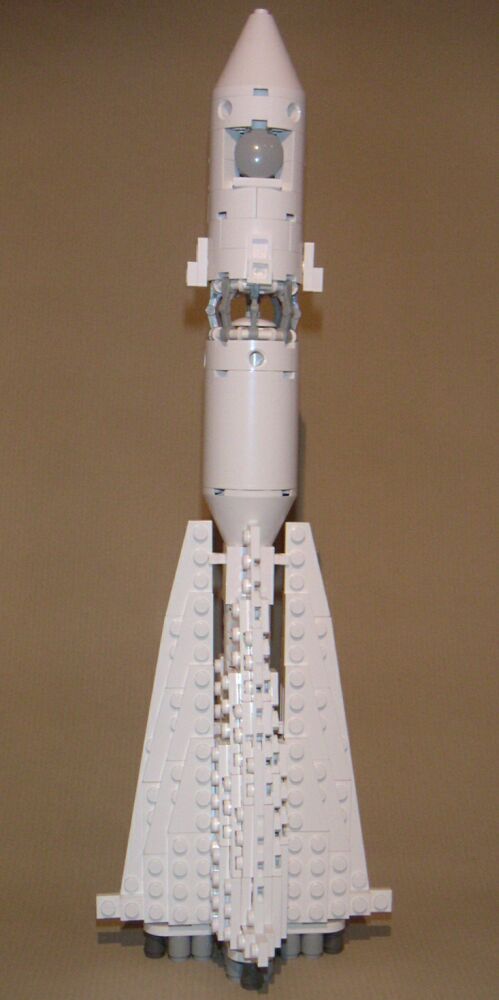

Sunday, April 10, 2011
Crab Nebula
In 1054 AD Chinese and Arab astronomers noted a bright star in the sky. This was a supernova, the explosive death of a star. The cloud of gas left behind was first observed in 1731. It was eventually dubbed the Crab Nebula, because to some observers it was shaped like a crab. At the center lies the Crab Pulsar, a neutron star that is a strong source of radio waves and gamma rays. In addition to their astronomical significicance, these great clouds of gas and dust are often sources of interest due to their beauty, as seen in this mosaic by Arthur Gugick.
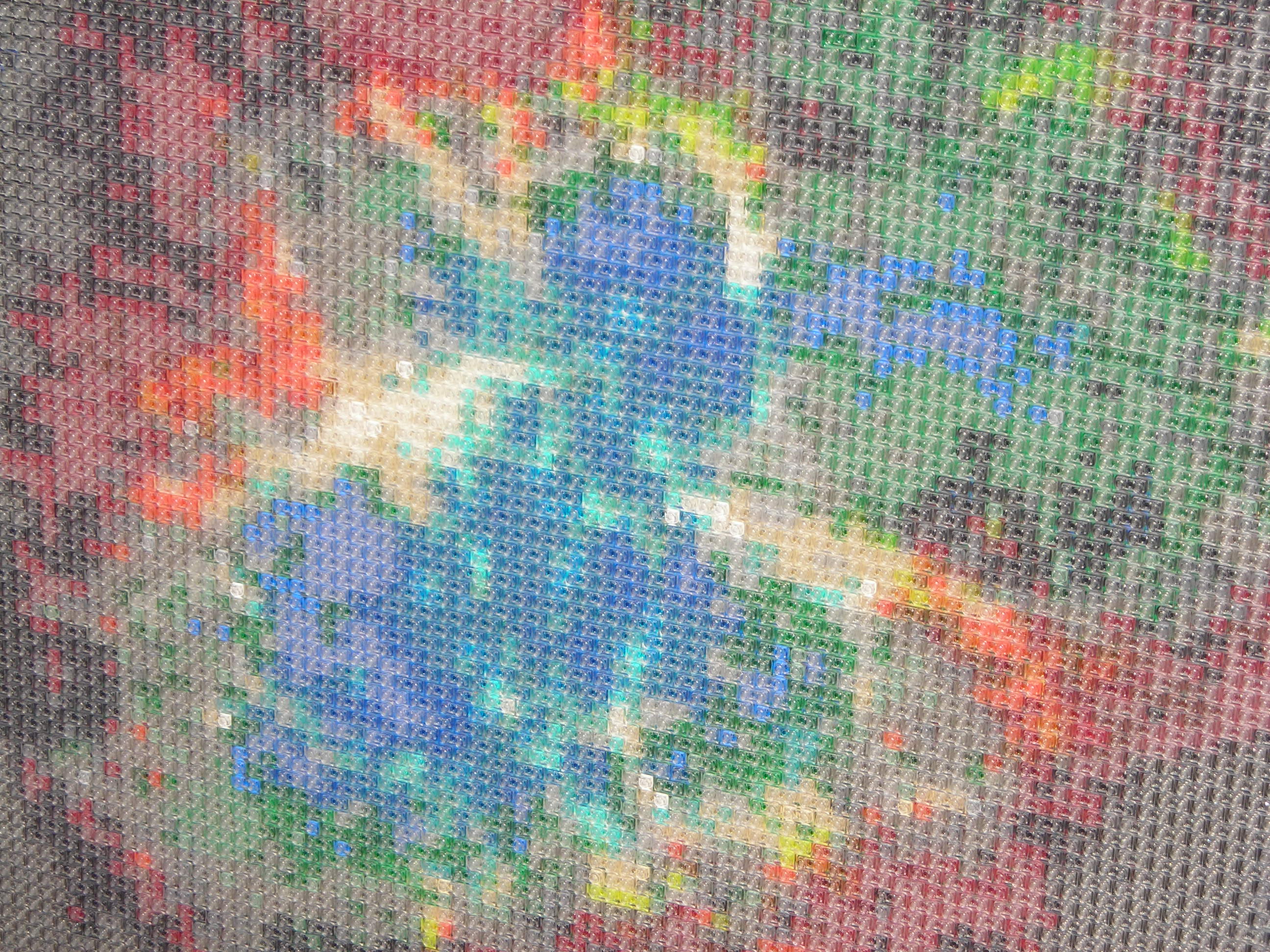

Tuesday, April 5, 2011
Mitosis
Cells produce offspring by the process of mitosis. First the parent cell DNA is replicated so there are two identical copies. Fibers pull the two sets of chromosomes to opposites ends of the cell, and then the cellular membrane pinches together in the center to make two identical cells. The director of the MIT Community Outreach and Education Program developed a series of LEGO models to help kids learn about biology, including this mitosis animation. These models, joined together under Sciene Builders, Inc. were at one time available for sale through LEGO Education, though it doesn't look like they are available any more. Don't worry, though. These are pretty simple constructions, so you could easily build your own based on their inspiration. If you need LEGO bricks, check out BrickLink.
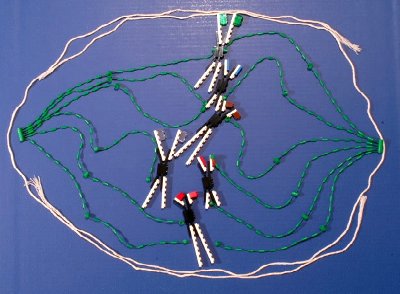

Saturday, April 2, 2011
Hayabusa
In 2003, Japan launched the Hayabusa probe towards asteroid 25143 Itokawa. After studying the asteroid for a few months, the probe collected physical samples from the surface of the asteroid. Then the probe returned to the earth, where the samples were collected last year, and they are now being studied. In81212 made this LEGO model of the Hayabusa probe.
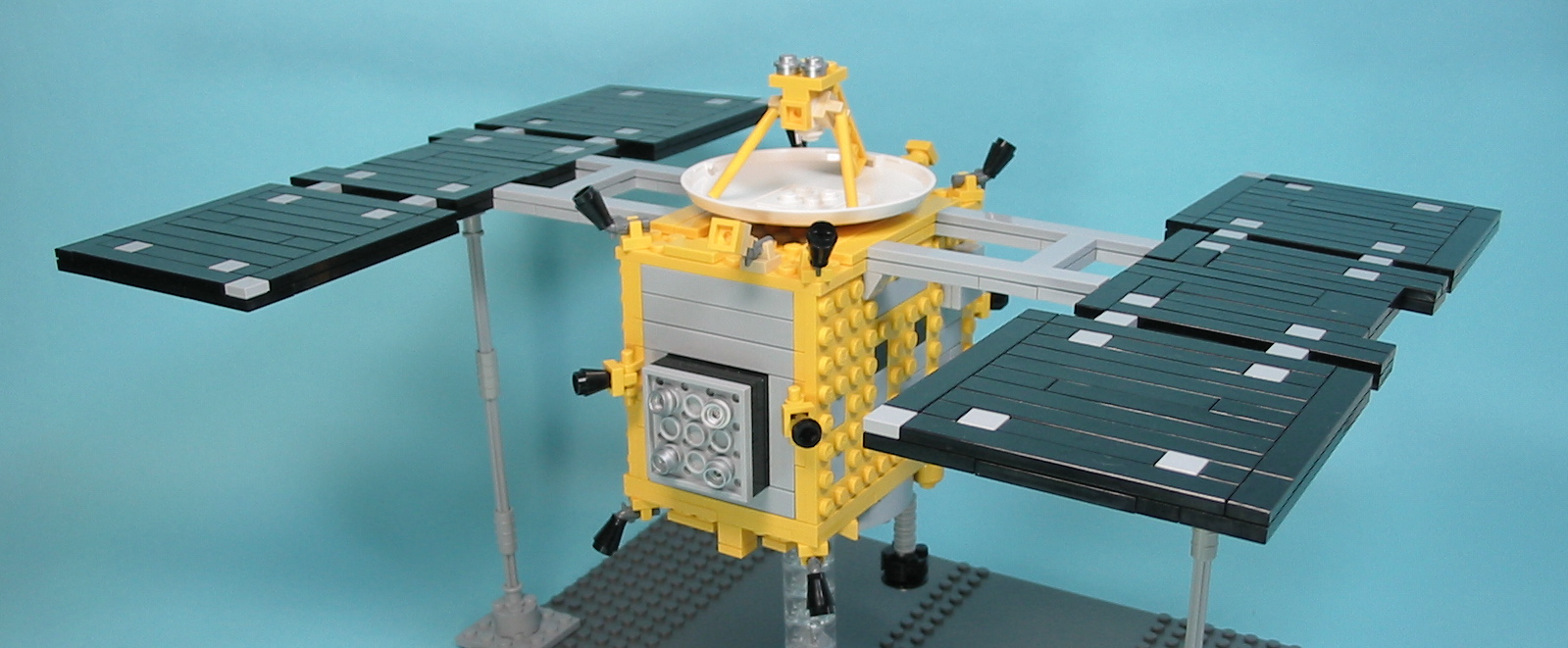
Incidentally, I should note that this model is what led to this blog. I've considered doing a blog along the lines of real science for a while now, but when I saw this I thought it deserved some notice. So many people make LEGO creations (called MOCs) of fictional space ships, but it's cool to see some real ones as well.

Incidentally, I should note that this model is what led to this blog. I've considered doing a blog along the lines of real science for a while now, but when I saw this I thought it deserved some notice. So many people make LEGO creations (called MOCs) of fictional space ships, but it's cool to see some real ones as well.
Friday, April 1, 2011
Subscribe to:
Comments (Atom)
